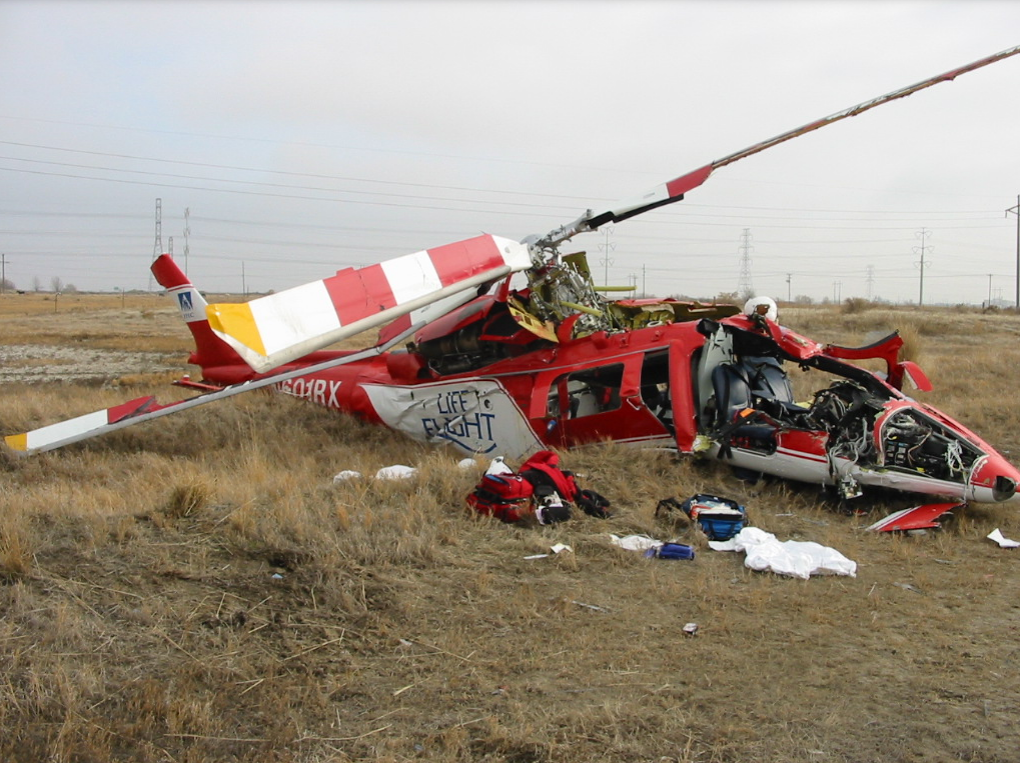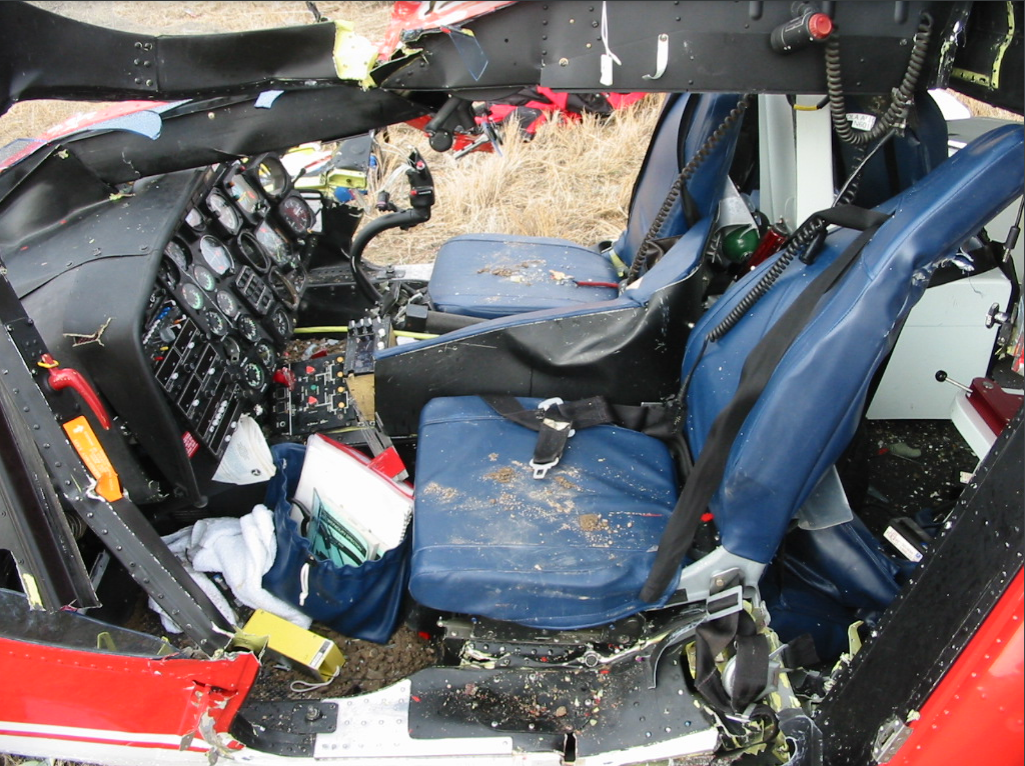
ASN Wikibase Occurrence # 45316
This information is added by users of ASN. Neither ASN nor the Flight Safety Foundation are responsible for the completeness or correctness of this information.
If you feel this information is incomplete or incorrect, you can submit corrected information.
| Date: | Friday 10 January 2003 |
| Time: | 20:50 |
| Type: |  Agusta A109K2 |
| Owner/operator: | IHC Life Flight |
| Registration: | N601RX |
| MSN: | 10017 |
| Year of manufacture: | 1993 |
| Total airframe hrs: | 3545 hours |
| Engine model: | Turbomeca Arriel 1K1 |
| Fatalities: | Fatalities: 2 / Occupants: 3 |
| Aircraft damage: | Destroyed |
| Category: | Accident |
| Location: | Salt Lake City, UT -
 United States of America United States of America
|
| Phase: | Manoeuvring (airshow, firefighting, ag.ops.) |
| Nature: | Ambulance |
| Departure airport: | Salt Lake City, UT |
| Wendover, UT | |
| Investigating agency: | NTSB |
| Confidence Rating: |
On January 10, 2003, approximately 2050 mountain standard time, an Agusta A-109-K2 twin-engine helicopter, N601RX, operated as Life Flight 6, was destroyed when it impacted terrain while attempting to maneuver in dense fog near the Salt Lake City International Airport (SLC), near Salt Lake City, Utah. The instrument-rated commercial pilot and the flight paramedic were fatally injured, and the flight nurse was seriously injured. The helicopter was owned and operated by IHC (Intermountain Health Care) Health Services, Inc., of Salt Lake City, and doing business as (d.b.a.) IHC Life Flight. Night instrument meteorological conditions (IMC) prevailed for the 14 Code of Federal Regulations Part 91 flight, for which a company visual flight rules (VFR) flight plan was filed. The flight originated at the LDS Hospital, Salt Lake City, at 2032, and was destined for Wendover, Utah, to pick up a patient who had been injured in an auto accident.
While maneuvering low to the ground during night conditions, the air ambulance helicopter encountered fog and poor weather conditions, and impacted the terrain. Shortly after departing from its hospital base, the helicopter was cleared by air traffic control to proceed through a major airport's airspace to respond to a medical emergency. After crossing through the airspace, the pilot elected to abort the mission; however, he was instructed by air traffic control to hold and wait for clearance through the airspace due to landing traffic at the airport. After holding for approximately 10 minutes, the pilot stated, "I'm basically inadvertent IMC at this time and declaring emergency...I'm currently on a heading one five zero." Examination of the accident site revealed the helicopter impacted the terrain on a heading of 150 degrees, became airborne for approximately 1/4 mile, then impacted the terrain and came to rest upright in a grassy field. According to documents provided by the operator, the pilot had accumulated a total of 311 simulated instrument flight time, and 3 hours of actual instrument flight time. Examination of the helicopter revealed no evidence of an in-flight control or system malfunction prior to the initial impact. Prior to the accident helicopter's departure from the hospital base, another air ambulance company helicopter attempted the same mission; however, aborted the mission due to fog and deteriorating weather conditions.'
Probable Cause: The pilot's delayed remedial action and continued flight into known adverse weather conditions which resulted in his failure to maintain clearance with the ground. Contributing factors were the prevailing fog, and the pressure to complete the mission induced by the pilot in command as a result of the air ambulance operation.
Accident investigation:
 |
|
Sources:
NTSB: https://www.ntsb.gov/_layouts/ntsb.aviation/brief.aspx?ev_id=20030117X00084&key=1
Air International FEB 2003
https://data.ntsb.gov/Docket?ProjectID=56318
http://aerossurance.com/helicopters/us-hems-post-accident-review/
Location
Images:


Media:
#OTD 2003 A US air ambulance helicopter hits the ground after pressing on into deteriorating weather. https://t.co/lhUMO8hVKH #airambulance #helicopter #accident #hems #flightsafety #aviationsafety pic.twitter.com/xA9FGY7KyT
— Aerossurance (@Aerossurance) January 10, 2022
Revision history:
| Date/time | Contributor | Updates |
|---|---|---|
| 28-Oct-2008 00:45 | ASN archive | Added |
| 07-Feb-2009 10:37 | harro | Updated |
| 27-Jan-2010 09:54 | Alpine Flight | Updated [Aircraft type, Other fatalities] |
| 01-Mar-2015 19:19 | Aerossurance | Updated [Source] |
| 21-Dec-2016 19:24 | ASN Update Bot | Updated [Time, Damage, Category, Investigating agency] |
| 08-Dec-2017 18:02 | ASN Update Bot | Updated [Operator, Nature, Source, Narrative] |
| 28-Dec-2020 17:20 | TB | Updated [Operator, Source, Narrative] |
| 10-Jan-2022 08:09 | Aerossurance | Updated [Nature, Source, Embed code, Narrative] |
| 26-Aug-2023 15:54 | Captain Adam | Updated [[Nature, Source, Embed code, Narrative]] |
Corrections or additions? ... Edit this accident description
The Aviation Safety Network is an exclusive service provided by:


 ©2024 Flight Safety Foundation
©2024 Flight Safety Foundation